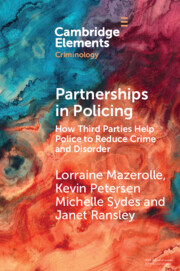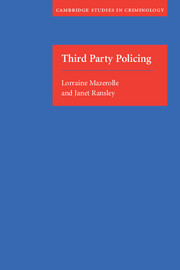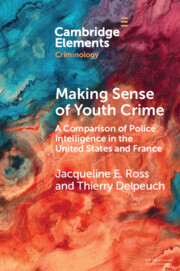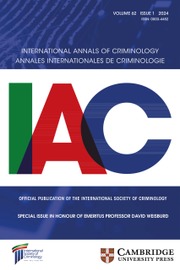Partnerships in Policing
Partnerships in policing are used worldwide to reduce crime and disorder problems. Police forge partnerships with businesses, government agencies, and communities to co-produce public safety. Third-party policing (TPP) is a particular type of partnership that involves the police addressing crime and disorder by working through (and with) third-party partners. This Element focuses on the nature and effectiveness of TPP partnerships. Using systematic review and meta-analytic techniques, it shows that TPP interventions are effective in efforts to reduce crime and disorder, without displacement of these problems. Cooperative partnerships are associated with considerably larger crime control effects than interventions relying on coercive engagement styles. Dyad partnerships – twosome partnerships between police and one third-party partner – are likely to offer the “sweet spot” in TPP. The Element concludes that partnership policing using non-criminal justice legal levers is a promising approach to crime control. This title is also available as Open Access on Cambridge Core.
Product details
February 2025Adobe eBook Reader
9781009472005
0 pages
This ISBN is for an eBook version which is distributed on our behalf by a third party.
Table of Contents
- 1. Introduction
- 2. Methods
- 3. Results
- 4. The role of legal levers
- 5. Optimizing the number of partners
- 6. Different engagement styles
- 7. Conclusion
- References.





